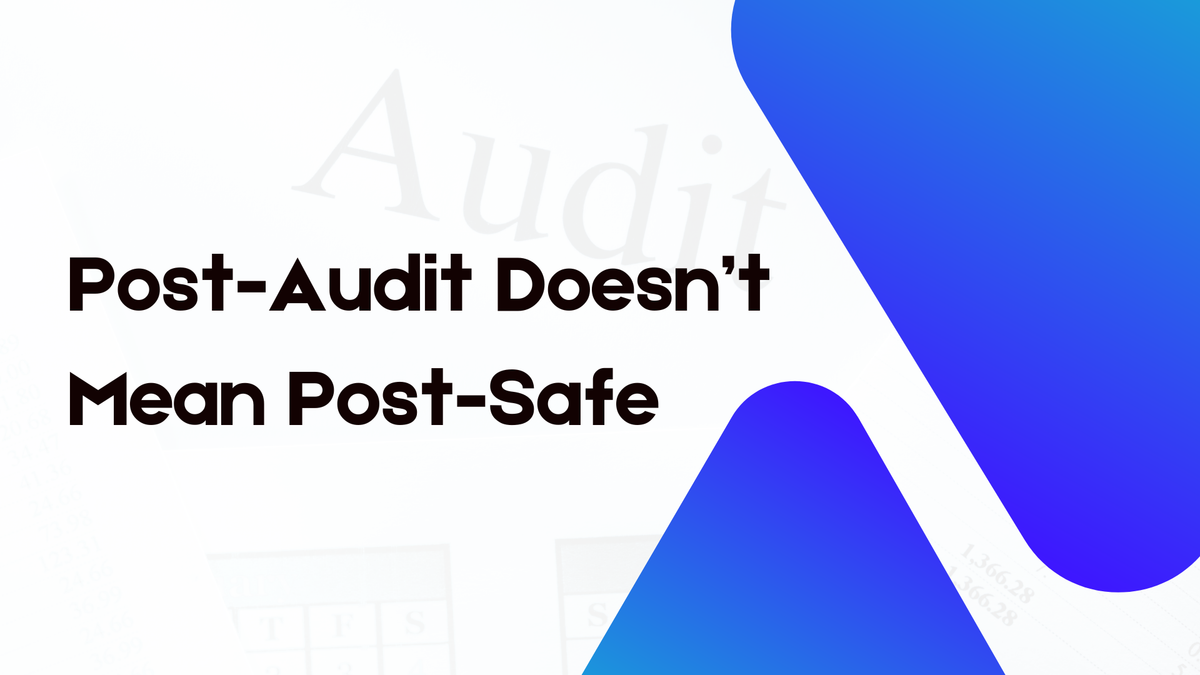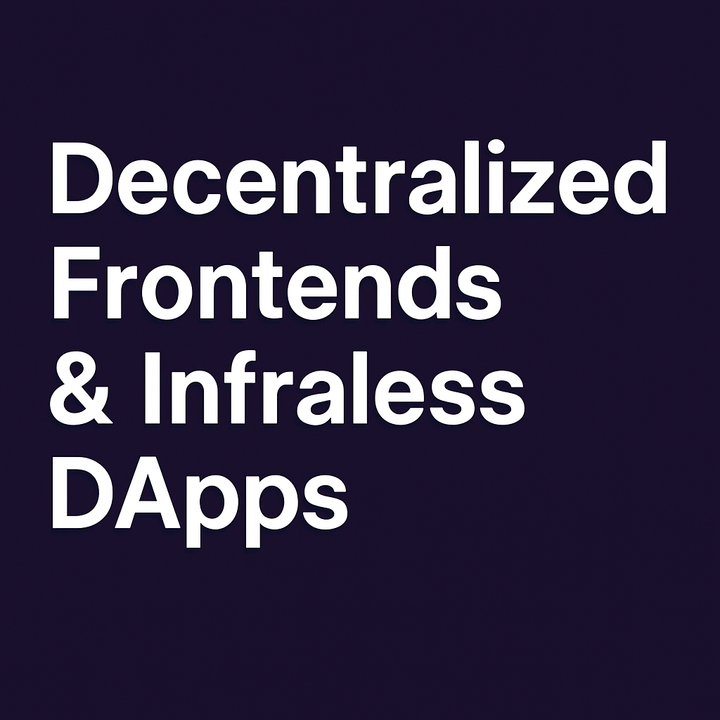Post-Audit Doesn’t Mean Post-Safe: Why Continuous Security Monitoring Matters in Web3

Many projects undergo rigorous security audits before launching their smart contracts or decentralized applications (dApps). However, passing a security audit does not mean that a project is immune to attacks. Some of the most high-profile Web3 exploits have targeted projects that had already passed through security assessments.
The Limitations of One-Time Security Audits
A security audit is an essential step for any Web3 project. Audits involve independent experts examining a project’s smart contracts for vulnerabilities, logical errors, and compliance with best practices. While audits provide valuable insights and help mitigate known risks, they have inherent limitations:
- Static Snapshot: Audits provide a security assessment at a specific point in time. Once the code changes through upgrades, patches, or feature additions, the audit's relevance diminishes. New vulnerabilities can be introduced inadvertently.
- Human Error and Oversight: Even the best auditors can miss subtle bugs or complex exploit pathways. Some vulnerabilities are only discovered through real-world usage.
- Dynamic Threat Landscape: Attack techniques evolve rapidly. A project secured today could be vulnerable tomorrow due to new attack vectors that emerge after the audit.
A perfect example is the Poly Network hack in 2021, where attackers exploited vulnerabilities despite security reviews, resulting in over $600 million being stolen before most of it was returned.
Why Continuous Security Monitoring is Critical
1. Smart Contract Immutability
One unique aspect of blockchain-based smart contracts is their immutability. Once deployed, the code cannot be altered unless pre-programmed upgrade mechanisms are in place. This means that any vulnerability present in a live contract cannot be patched like in traditional software. Continuous monitoring helps detect exploitation attempts early, giving projects a chance to pause contracts (if possible) or take mitigative action.
2. Evolving Attack Techniques
The threat landscape in Web3 is continuously shifting. For instance, flash loan attacks became a prominent vector after attackers realized they could manipulate DeFi protocols with minimal upfront capital. New threats such as cross-chain bridge attacks, oracle manipulation, and governance attacks are constantly emerging.
3. Real-Time Alerts for Fast Response
In the event of an exploit, speed is crucial. Real-time monitoring tools can provide instant alerts when abnormal activity is detected, such as unusually large transactions, unauthorized changes, or high-frequency operations. Rapid alerts enable project teams to:
- Trigger emergency pause functions.
- Notify users.
- Engage white-hat communities for assistance.
Tools like Forta Network specialize in real-time monitoring of smart contracts, providing early warnings before catastrophic losses occur.
Real-World Examples of Post-Audit Exploits
Even after passing security audits, numerous Web3 projects have suffered significant losses:
- Ronin Network Hack (Axie Infinity): Despite security audits, hackers exploited the network, stealing over $600 million.
- Nomad Bridge Hack: Audited by multiple firms, yet $190 million was drained in 2022 due to a simple coding oversight.
- Beanstalk DAO Exploit: A flash loan-based governance attack drained $182 million, showcasing how economic exploits can bypass traditional code audits.
These cases underscore the need for not only preventive audits but also detective controls that continuously monitor for anomalies.
How Continuous Monitoring Works
Anomaly Detection
Anomaly detection systems are designed to flag deviations from a contract’s normal behavior. By establishing a baseline from historical activity, such as average gas fees, transaction volume, or function call frequency, these systems identify potential threats early.
Some rely on rule-based logic (e.g., flagging when token transfers exceed expected thresholds within a given time). Others use machine learning models capable of recognizing subtler trends and abnormal behaviors that evade traditional filters. For instance, if a low-volume contract suddenly pushes out multiple high-value transactions within a few blocks, the system can raise an alert immediately.
On-Chain Analytics
While anomaly detection focuses on internal behavior, on-chain analytics brings external awareness. Firms like Chainalysis, Elliptic, and TRM Labs offer tools that track wallet interactions across protocols, cluster addresses by behavior, and assign risk scores.
If a smart contract interacts with a wallet flagged for illicit behavior, such as being linked to a hack, ransomware payment, or a sanctioned entity, analytics systems can warn or block these interactions. These insights empower DeFi applications, exchanges, and wallets to prevent tainted funds from circulating.
Automated Incident Response
When something goes wrong, speed is everything. That’s why many protocols integrate automated incident response systems capable of taking immediate protective actions.
These responses may include pausing smart contracts, throttling transactions, or limiting access through kill switches and role revocations. For example, if a price oracle is manipulated, an automatic script might detect the irregular price, halt lending services, and notify the dev team instantly, preventing millions in potential losses.
Integrations with messaging services like Slack, Telegram, or email ensure that engineers receive real-time alerts, enabling human review and intervention when needed.
The Role of Bug Bounties and Community Vigilance
Continuous monitoring is not solely the domain of automated systems. Many projects enhance their security posture by running bug bounty programs via platforms like Immunefi. These programs incentivize white-hat hackers to find and report vulnerabilities before malicious actors can exploit them.
Additionally, transparent reporting and community vigilance play a vital role. Active community members often spot irregularities and raise alarms faster than centralized teams.
Building a Security-First Culture
Security in Web3 should not be an afterthought. Projects should:
- Conduct multiple audits at different development stages.
- Implement continuous monitoring and real-time alerting.
- Maintain emergency response plans.
- Engage in ongoing security education for team members.
Projects that embrace these principles not only protect user funds but also build trust and long-term credibility in the space.
Conclusion
A security audit is the beginning, not the end, of a robust security strategy. The dynamic nature of blockchain technology, combined with the high stakes involved, makes continuous security monitoring and real-time alerts indispensable. As the Web3 ecosystem grows, so too must its approach to security, ensuring that innovation is matched by resilience.
By adopting continuous security practices, projects can protect not just their code but also their users, reputations, and the very future of decentralized technology.
References
- Chainlink: Top 10 DeFi Security Best Practices
- ConsenSys: Security Blog
- Rekt News: DeFi Exploits & Post-Mortems
- CertiK: Security Resources & Insights
- SlowMist on Medium: Blockchain Security Articles
MITOSIS official links:
GLOSSARY
Mitosis University
WEBSITE
X (Formerly Twitter)
DISCORD
DOCS


Comments ()